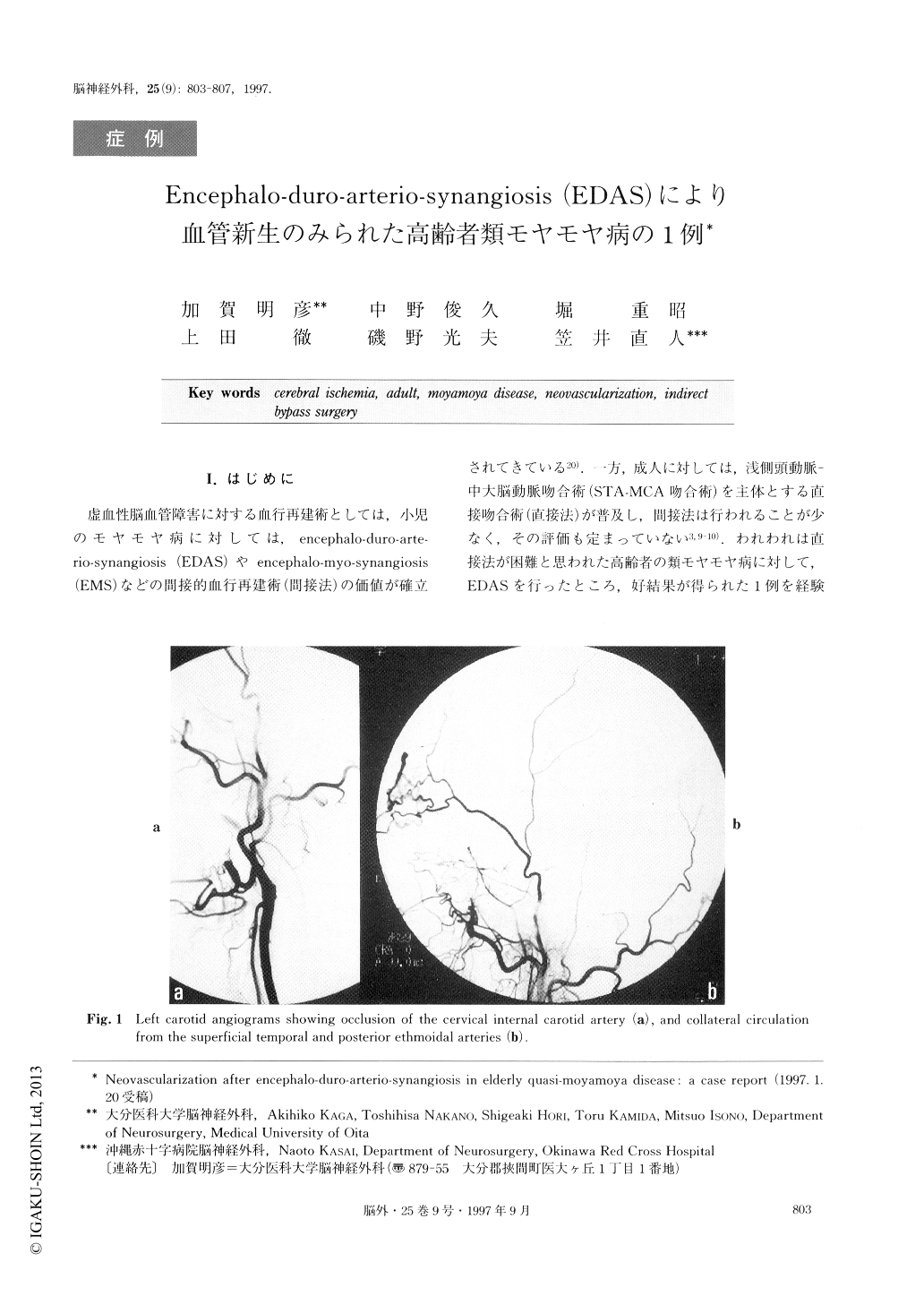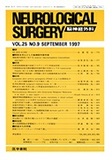Japanese
English
- 有料閲覧
- Abstract 文献概要
- 1ページ目 Look Inside
I.はじめに
虚血性脳血管障害に対する血行再建術としては,小児のモヤモヤ病に対しては,encephalo-duro-arte—rio-synangiosis(EDAS)やencephalo-myo-synangiosis(EMS)などの間接的血行再建術(間接法)の価値が確立されてきている20).一方,成人に対しては,浅側頭動脈—中大脳動脈吻合術(STA-MCA吻合術)を主体とする直耳接吻合術(直接法)が普及し,間接法は行われることが少なく,その評価も定まっていない3,9-10).われわれは直接法が困難と思われた高齢者の類モヤモヤ病に対して,EDASを行ったところ,好結果が得られた1例を経験したので報告する.
A 65-year-old man who had a history of diabetes mellitus visited a hospital for recent memory disturb-ance. MR angiography showed stenoses of the main trunks of the intracranial arteries. He was admitted to our hospital, and angiography revealed occlusion of the left cervical internal carotid and right middle cerebral arteries, and stenoses of the right internal carotid, right anterior cerebral, left vertebral, and right posterior cere-bral arteries. There was collateral circulation formed from the left external carotid and left posterior cerebral arteries. Basal moyamoya vessels were also observed. 123I-IMP SPECT showed low perfusion of the right cerebral hemisphere, and response to acetazolamide was poor.
Based on the angiographical findings and the pre-sence of diabetes mellitus, the patient was diagnosed as having quasi-moyamoya disease. Vascular reconstruc-tive surgery was indicated. Since there was no recipient artery adequate for STA-MCA anastomosis, encephalo-duro-arterio-synangiosis was performed on the right side. Postoperatively, the patient's recent memory im-proved gradually, and angiography performed 7 months after the operation revealed neovascularization from the superficial and deep temporal arteries.
Although indirect bypass surgery has been applied mainly to child moyamoya disease, its effectiveness for cerebral ischemia in adult patients has also been report-ed, particularly in cases with misery perfusion. Neovas-cularization with indirect bypass surgery can be expect-ed if the patient is under misery perfusion, even in elderly patients.

Copyright © 1997, Igaku-Shoin Ltd. All rights reserved.


